I am looking for a way to reproduce the "Vibrant" iOS 16 effect that occurs on Lock Screen Widget on iOS 16 because my app should be able to display a preview of the widget while the user is the creation process.
Examples: See the 4 round widgets on the center screen below.
Here is what Apple documentation says about this effect:
Vibrant: For Lock Screen widgets, iOS desaturates text, images, and gauges into monochrome and creates a vibrant effect by coloring your content appropriately for the Lock Screen background. People can also color the Lock Screen to a colored tint. from Apple Documentation
I don't know how to reproduce that effect. Did a try with that code but not satisfied:
MyOriginalView()
.compositingGroup()
.saturation(0.0)
.blendMode(.plusLighter) // or .blendMode(.hardLight)
Here is more precise explanation of the vibrant effet from iOS 16 that I would like to reproduce.
Using the source view and a parameter color, the source view is converted to gray scale. White pixels seems to be rendered using the parameter color, where black pixel use a blurred transparent darker color based on the parameter color.
See below an example of view transformation.
Here is some code to create a Test image and to have the iOS 16 widget render from this view. This is exactly the effect I want to mimic in my app.
SwiftUI 4.0 Code (iOS16+): (You will need to add a Widget Target for the code to compile I think)
import SwiftUI
import WidgetKit
struct SourceView: View {
var body: some View {
VStack (spacing: 0) {
Color.black
HStack (spacing: 0) {
Color.black
Color.black.opacity(0.75)
Color.black.opacity(0.5)
Color.black.opacity(0.25)
Color.black.opacity(0.0)
}
HStack (spacing: 0) {
Color.red
Color.blue
Color.green
Color.yellow
Color.white
}
HStack (spacing: 0) {
Color.white.opacity(0.0)
Color.white.opacity(0.25)
Color.white.opacity(0.5)
Color.white.opacity(0.75)
Color.white
}
Color.white
}
.aspectRatio(1, contentMode: .fit)
.mask(Circle())
}
}
struct SourceView_Previews: PreviewProvider {
static var previews: some View {
SourceView()
.padding(20)
.frame(maxWidth: .infinity, maxHeight: .infinity)
.background(LinearGradient(colors: [Color(white:0.96), Color(white:0.6)], startPoint: .topLeading, endPoint: .bottomTrailing))
.ignoresSafeArea()
}
}
@available(iOS 16.0, *)
struct VibrantEffectDemonstration_Previews: PreviewProvider {
static var previews: some View {
SourceView()
.previewContext(WidgetPreviewContext(family: .accessoryCircular))
}
}
Any help appreciated!
Thanks




